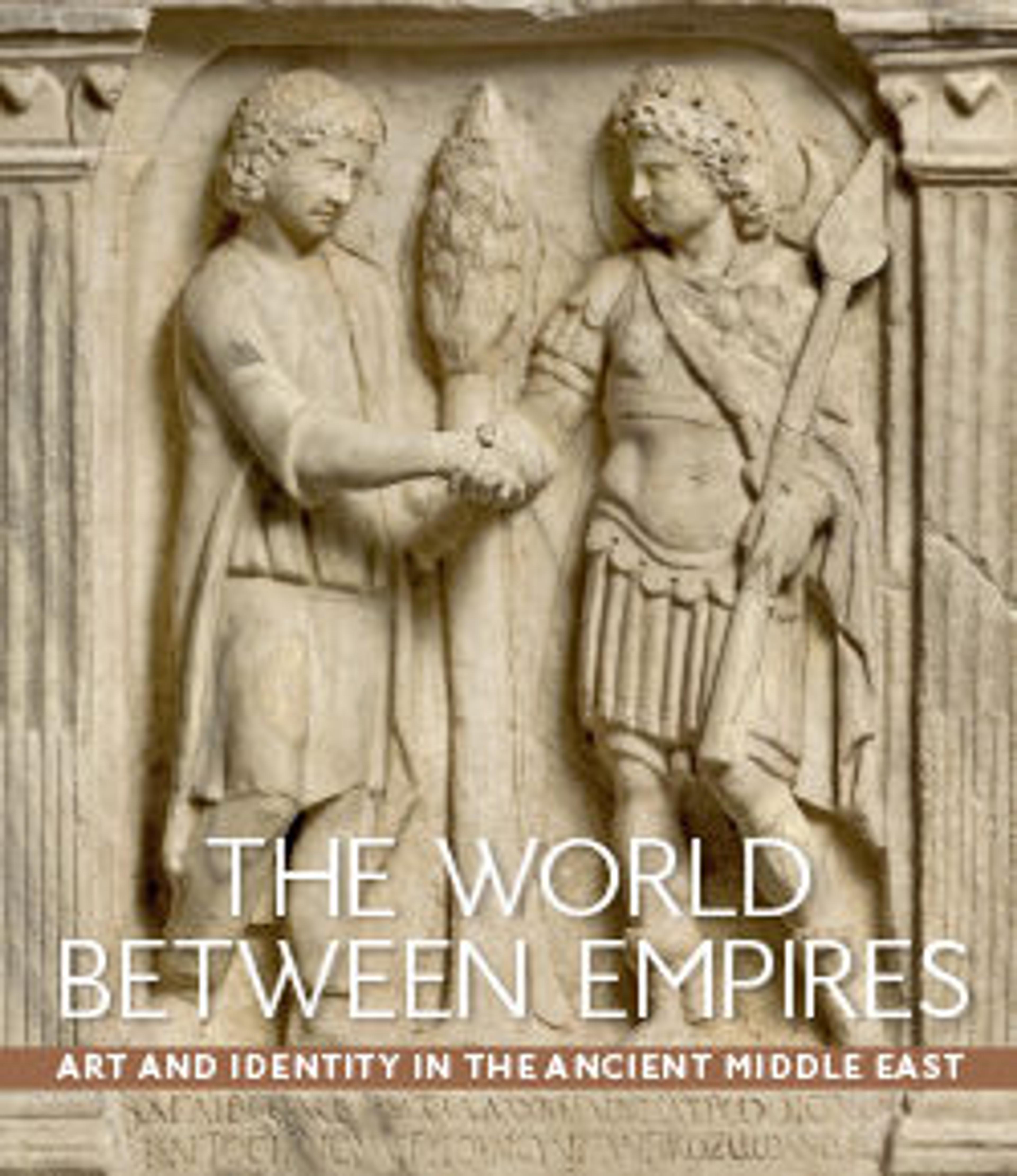Funerary relief
Inscription:
(at right)
1 Nesha,
2 son of
3 [ ... ]
(at left)
1 Belha,
2 (son of) Hashash.
3 Alas!
Transliteration:
1 nšʾ
2 br
3 […]
1 blḥʾ
2 ḥšš
3 ḥbl
This relief is a type of funerary monument characteristic of the prosperous caravan city of Palmyra during the first three centuries A.D. Reliefs with a representation of the deceased and a short identifying inscription were used to seal burial niches in elaborately decorated communal tombs; those with a half-length or bust format became prevalent sometime after A.D. 65.
The relief depicts the upper body of a youthful, beardless man dressed in a Greek garment known as a himation, which wraps around his right arm like a sling, holding a small object, probably a schedula (book roll), in his left hand. His expression is serene, although the intensity of his gaze is emphasized by the large size of his eyes, the modeled eyelids, and the incised concentric circles indicating the iris and pupil of each eye. His hair is depicted as rows of uniform, stylized snail-like curls that cover his head like a cap. The sides and top of the head are rendered in detail, giving a three dimensional aspect to the relief. He stands in front of a dorsalium (draped cloth) affixed by rosettes to a pair of curving leafy branches. An inscription in Palmyrene Aramaic, visible directly to the right of his head, gives his name and lineage, ending with an expression of sorrow common on funerary reliefs at Palmyra. Another inscription, to the right of this one, names a different individual; originally, this slab was probably a double portrait that was cut into two after its removal from the tomb. Small chips and cracks in the surface are due to the use of soft local limestone. Traces of red pigment are visible in the inscription and on the two rosettes. Stylistically, the relief belongs to an early group of Palmyrene male funerary portraits dating to about 50–150 A.D., evidenced by the treatment of the coiffure and the figure’s beardlessness as well as by the manner in which the eyes are carved. In fact, the date can be narrowed further to late in this period (ca. 125–50 A.D.) on the basis of the sensitively modeled carving of the face and the use of pattern-like semicircular shapes among the folds of the himation.
(at right)
1 Nesha,
2 son of
3 [ ... ]
(at left)
1 Belha,
2 (son of) Hashash.
3 Alas!
Transliteration:
1 nšʾ
2 br
3 […]
1 blḥʾ
2 ḥšš
3 ḥbl
This relief is a type of funerary monument characteristic of the prosperous caravan city of Palmyra during the first three centuries A.D. Reliefs with a representation of the deceased and a short identifying inscription were used to seal burial niches in elaborately decorated communal tombs; those with a half-length or bust format became prevalent sometime after A.D. 65.
The relief depicts the upper body of a youthful, beardless man dressed in a Greek garment known as a himation, which wraps around his right arm like a sling, holding a small object, probably a schedula (book roll), in his left hand. His expression is serene, although the intensity of his gaze is emphasized by the large size of his eyes, the modeled eyelids, and the incised concentric circles indicating the iris and pupil of each eye. His hair is depicted as rows of uniform, stylized snail-like curls that cover his head like a cap. The sides and top of the head are rendered in detail, giving a three dimensional aspect to the relief. He stands in front of a dorsalium (draped cloth) affixed by rosettes to a pair of curving leafy branches. An inscription in Palmyrene Aramaic, visible directly to the right of his head, gives his name and lineage, ending with an expression of sorrow common on funerary reliefs at Palmyra. Another inscription, to the right of this one, names a different individual; originally, this slab was probably a double portrait that was cut into two after its removal from the tomb. Small chips and cracks in the surface are due to the use of soft local limestone. Traces of red pigment are visible in the inscription and on the two rosettes. Stylistically, the relief belongs to an early group of Palmyrene male funerary portraits dating to about 50–150 A.D., evidenced by the treatment of the coiffure and the figure’s beardlessness as well as by the manner in which the eyes are carved. In fact, the date can be narrowed further to late in this period (ca. 125–50 A.D.) on the basis of the sensitively modeled carving of the face and the use of pattern-like semicircular shapes among the folds of the himation.
Artwork Details
- Title:Funerary relief
- Date:ca. 125–150
- Geography:From Syria, Palmyra
- Medium:Limestone
- Dimensions:25 1/2 × 20 1/8 × 12 in., 248.5 lb. (64.8 × 51.1 × 30.5 cm)
- Credit Line:Bequest of Armida B. Colt, 2011
- Object Number:2012.454
- Curatorial Department: Ancient West Asian Art
More Artwork
Research Resources
The Met provides unparalleled resources for research and welcomes an international community of students and scholars. The Met's Open Access API is where creators and researchers can connect to the The Met collection. Open Access data and public domain images are available for unrestricted commercial and noncommercial use without permission or fee.
To request images under copyright and other restrictions, please use this Image Request form.
Feedback
We continue to research and examine historical and cultural context for objects in The Met collection. If you have comments or questions about this object record, please contact us using the form below. The Museum looks forward to receiving your comments.
